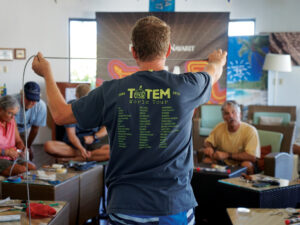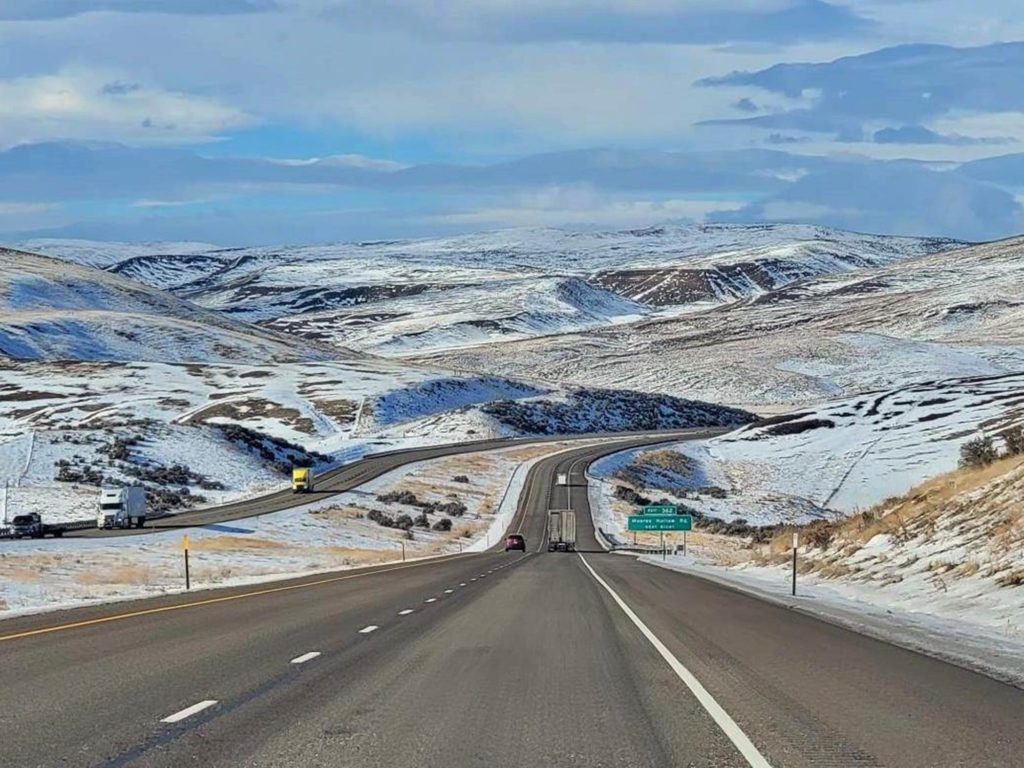
A couple weeks before Christmas, we drove from Mexico to the Pacific Northwest: four days over snowy roads, with dense fog and high mountain passes in a 24-year-old SUV with a quarter-million miles on the odometer. It’s a season for gatherings, for all of the holidays Thanksgiving through New Year’s, and we anticipated joyful reunions. But this trip was more: Doña Blanca (a new-to-us 1998 Infiniti) was packed full with the possessions of our daughters, Mairen and Siobhán. When we return to our Stephens 47, Totem, my husband, Jamie, and I will be on the first leg of our journey as an empty-nest crew.
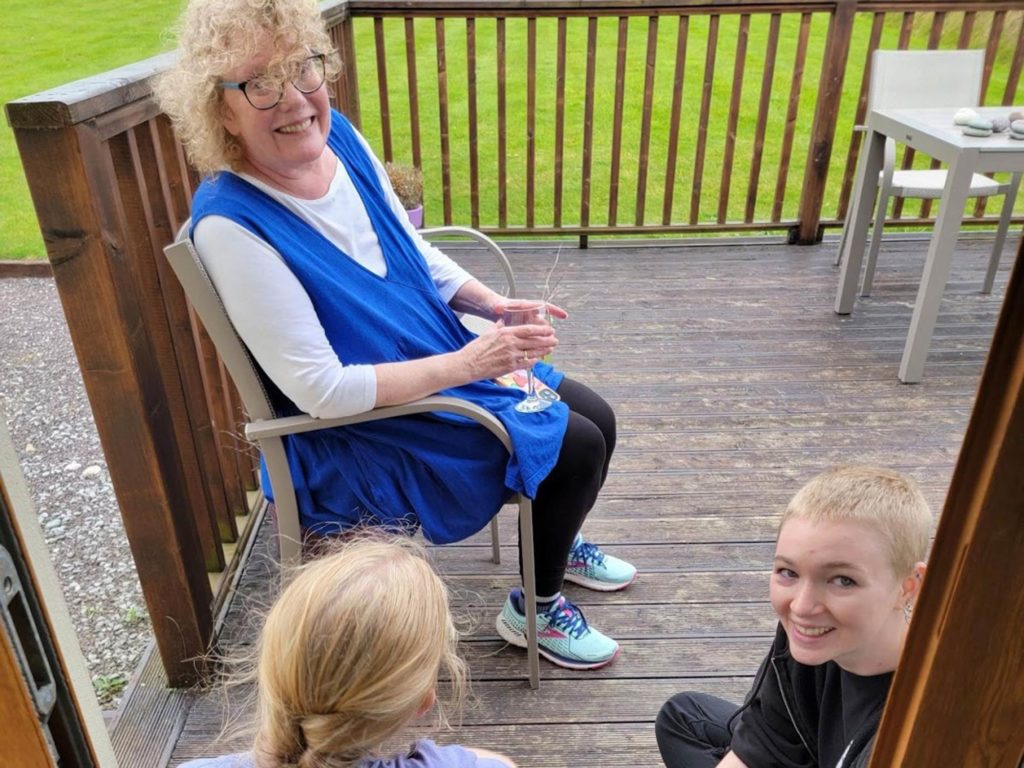
During our travels this summer, our daughters cemented their intention to move to land. The tipping point was in September when we met up with a relative from Bellingham, Washington, while we were in Ireland.
“You should come stay with me,” my Aunt Heidi offered. The girls had been eyeing her town just south of the Canadian border. It offers college and university options, proximity to extended family, and the cool climate they crave after their mostly tropical upbringing.
Since they grew up differently, as travelers and boat-schooled kids, it’s perhaps unsurprising that the process of transitioning to their next step looks different from what other kids do. When I was their age, I followed a scripted path to a four-year college; it held many great experiences, but was an expensive way to learn what I didn’t want to do. By contrast, our daughters know there are myriad paths to follow, and they can take time to explore them. Their next move is to balance independent living with college classes and part-time work.
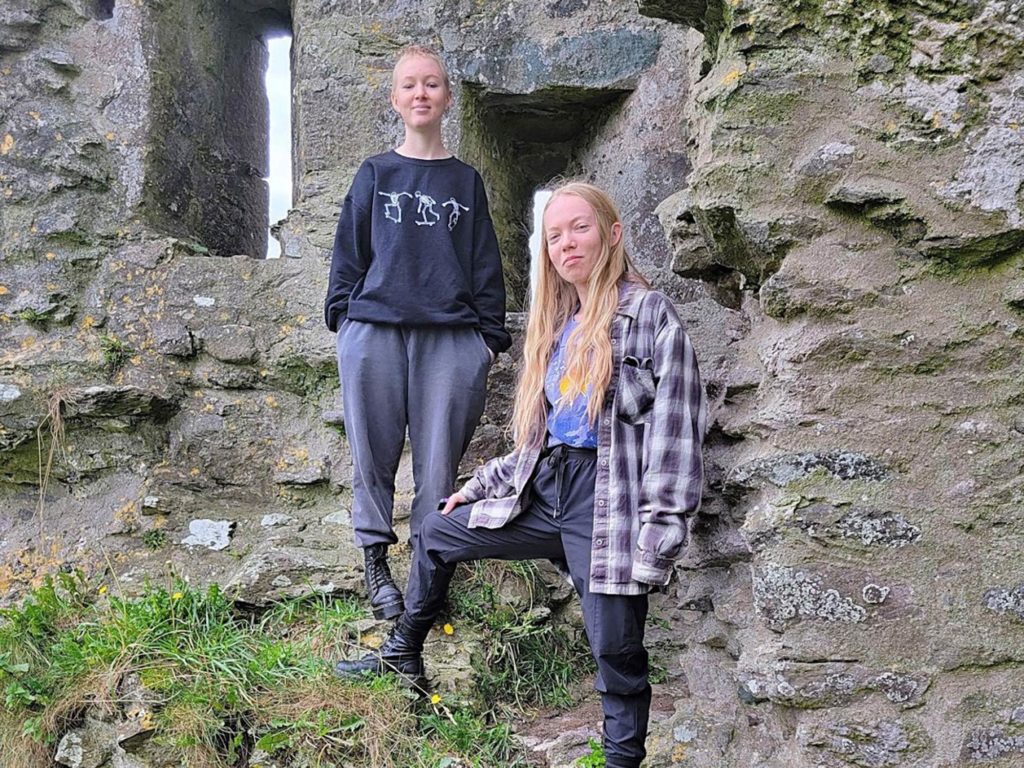
I guess this means Jamie and I will now have to take on the roles the girls have filled —washing dishes, cleaning our casita, and doing laundry, in addition to cooking many of our meals. I’m going to miss Mairen’s baking and Siobhán’s endless creativity with Asian-inspired dishes. But mostly, I’m going to miss everyday time with my girls.
This wistfulness fades into perspective with our joy for their next steps. After years of periodic volunteering in animal welfare (and an intensive last year in a veterinary clinic in Puerto Penasco), Siobhán’s goals have centered around providing direct care. A veterinary technician program in Bellingham feels made for her. Mairen, our quiet artist, is leaning into a visual communications program at another Bellingham community college, one that opens a range of options for her. They will have a third roommate—another boat kid—in the apartment we hope to secure soon, forming a cohort of support for Adulting 101.
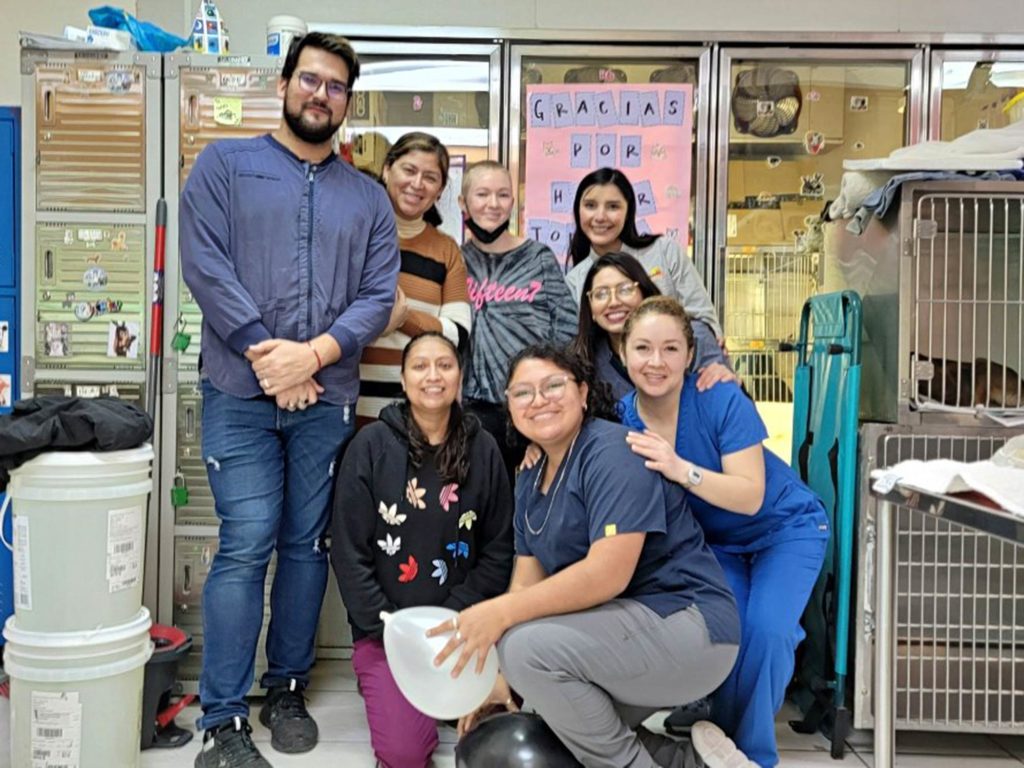
Crew Changes
While it had been our sincere hope that the girls would sail back to the South Pacific with us, engine delays pressed beyond their patience to wait yet another year. Since they are 18 and 20 years old, we can’t blame them. We had similarly hoped that their brother, Niall, could join us for an extended passage this year, but he just started his first post-college graduation job, which makes the time needed for a Pacific crossing unlikely.
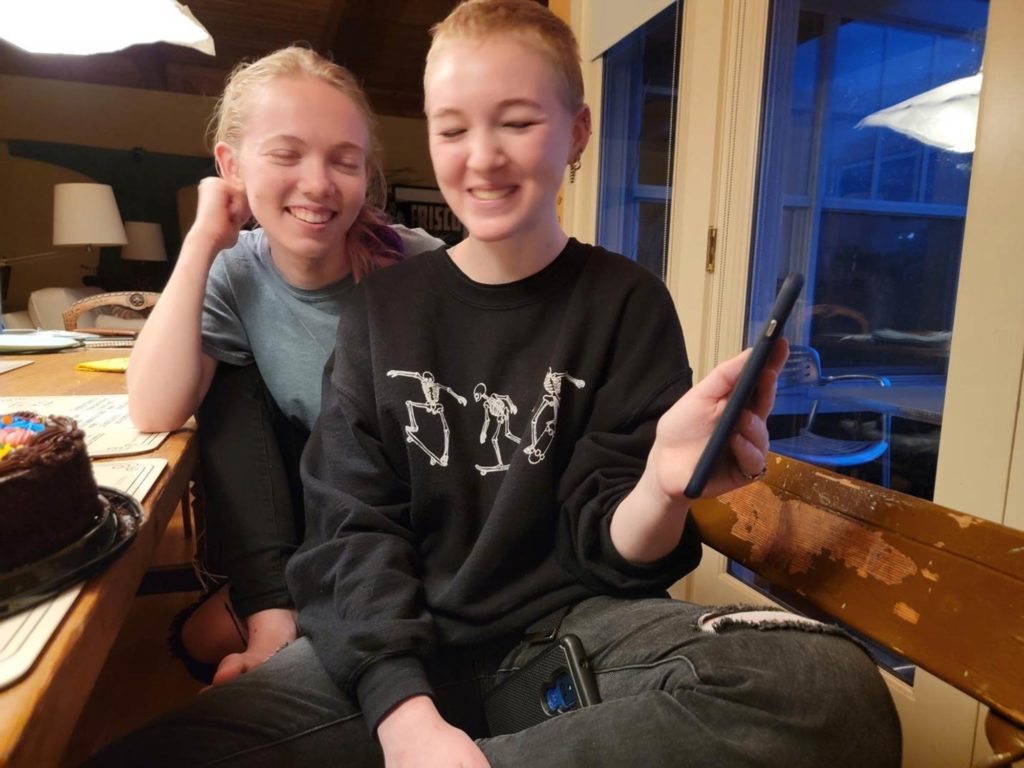
That means we expect 2023 to include our first significant passages aboard Totem without the three younger members of our crew. Jamie and I effectively doublehanded for years when they were small, but they grew to become integral parts of Totem’s everyday operation. You bet their transcripts all include some version of “vessel management at sea.” Those are legit credits.
We’ve been asked if we’ll bring on crew or offer passage berths, but this isn’t in the plans. Jamie and I have brought members of our TRU crew coaching community aboard before, and will likely do that again, informally. Mostly, we can’t wait to point Totem’s bow out to sea and put miles under her keel with just the two of us.
About Those Sailing Plans…
So, when will we be back in the water? It’s a question we’ve almost stopped trying to answer.
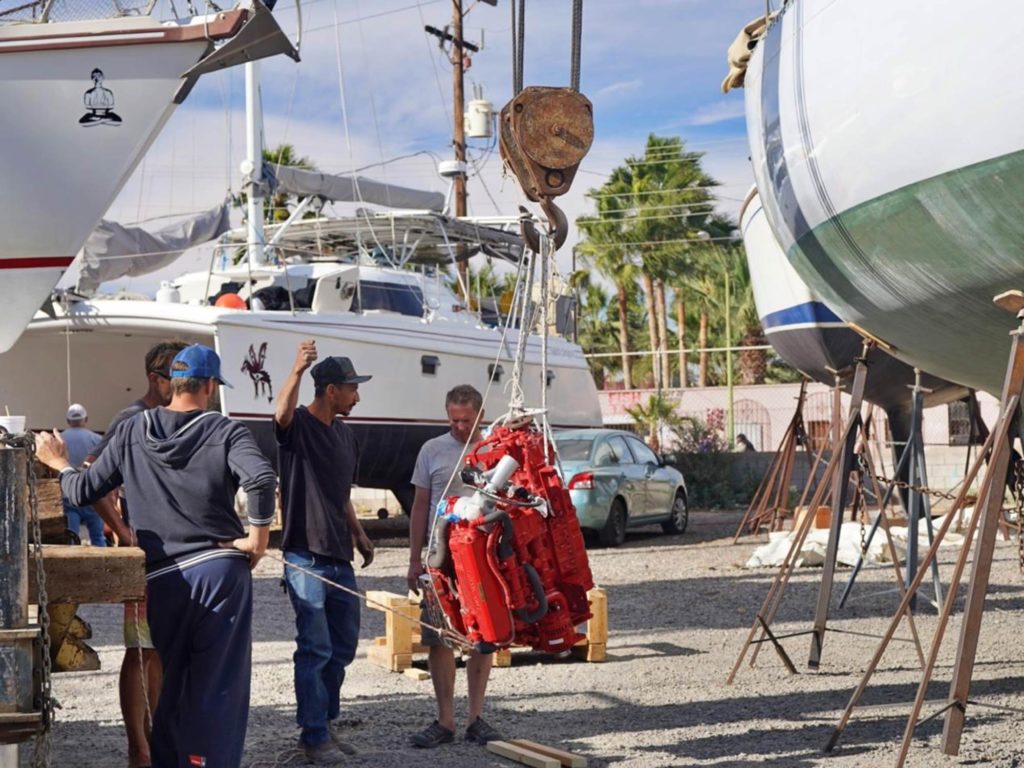
The good news is that Totem’s new Beta 70T engine is in, aligned and mounted: no small effort. Cabrales Boatyard’s crew and two cruisers helped squeeze, coerce and force the beast below. It weighs around 900 pounds, so moving it for adjustments required a mix of mechanical advantage and ingenuity.
Build-out is done in the main cabin and galley. The engine room is effectively rebuilt with fresh paint and insulation. We all breathed a sigh of relief when the bathtub, I mean the new sink, fit neatly in place above the new Beta engine.
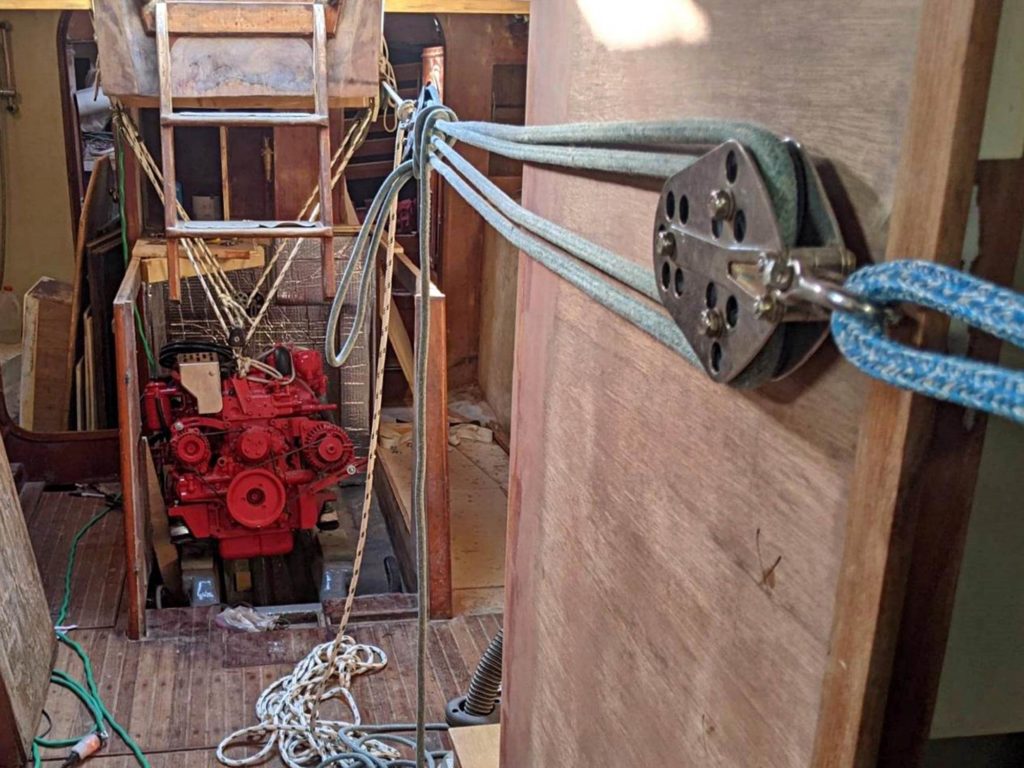
Behind the sexy new transom, the lazarette has been stripped, sanded, faired and painted. There’s a gorgeous Edson pedestal in the cockpit. A new rudder port gland was fabricated and installed. Everything is more complicated and involved to execute than those simple sentences suggest. At least this time, Jamie did not get stuck in the lazarette doing boat yoga while painting (yes, this has happened).
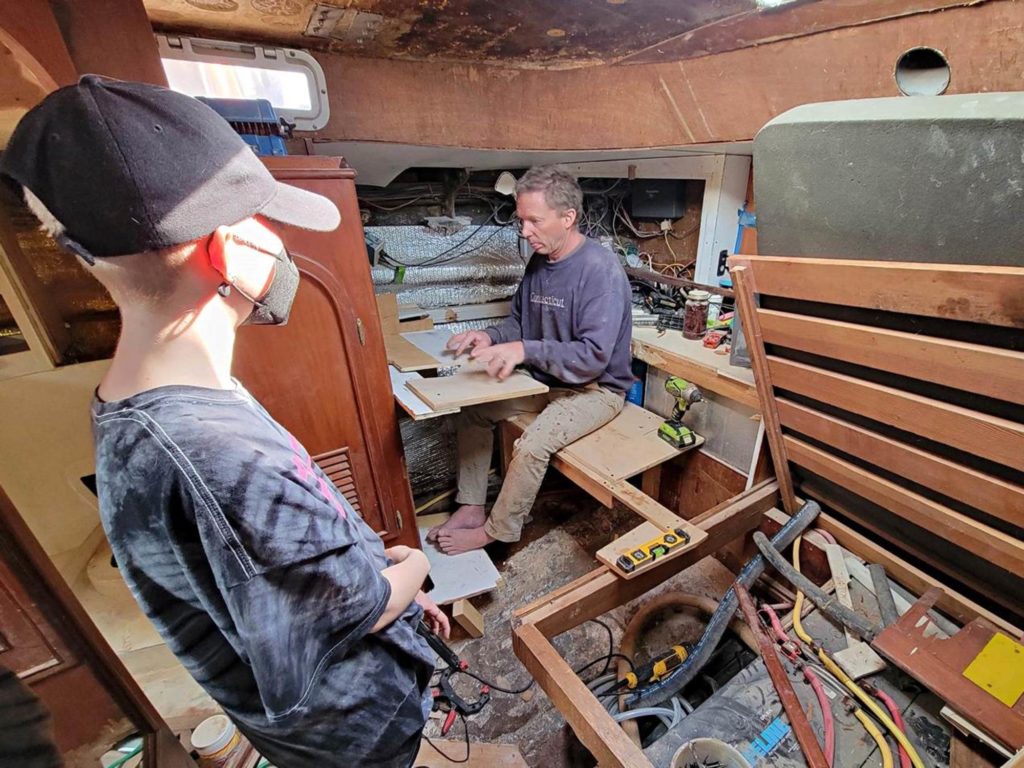
We thought we wouldn’t have to touch the aft cabin beyond adjusting the desk and adapting the battery box for our switch to lithium. Then, we discovered (“stopped ignoring” is more like it) extensive dry rot in the teak sole and subfloor. It wasn’t hard to go from doing a few tweaks to ripping out the starboard half of the cabin. This area has all kinds of ways to be improved upon, from desk ergonomics to stowage, and a utility compartment.
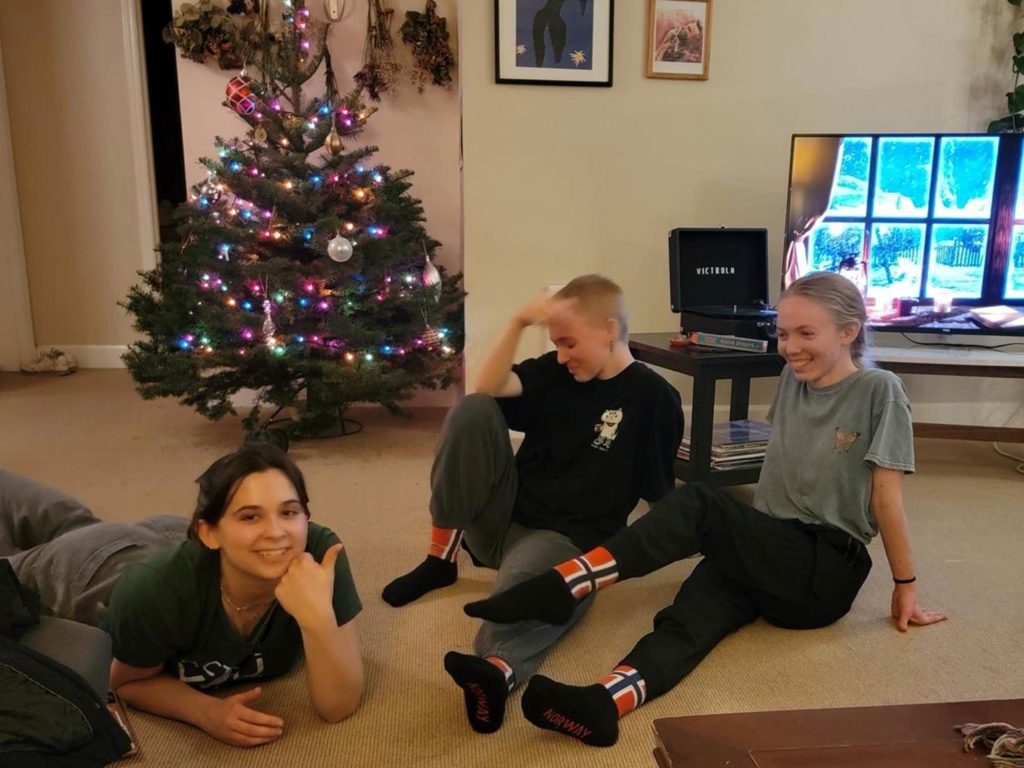
Those projects are waiting for us in Mexico. For now, we’re tucked in the cozy kitchen at my aunt’s home in Bellingham, sipping eggnog lattes and scouring apartment listings. Our journey included enjoying family dinner and a wicked game of rummy with dear ones in Salt Lake City. We also stopped in Portland to visit Niall and his girlfriend, Julia, and to hear about his first day of work at his first non-boat-related job.
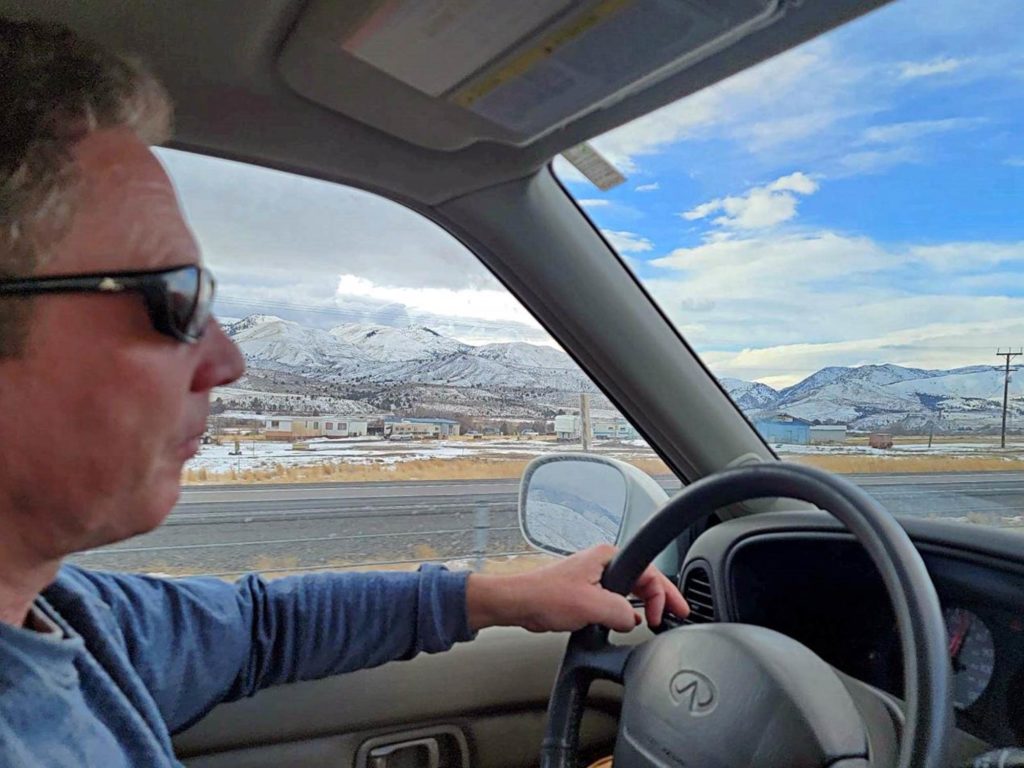
Along the way, we were treated to sweeping views that encompassed so much of the landscape through the Western states. Our hearts are full, quelling trepidation about the next chapter about to unfold for our family.


